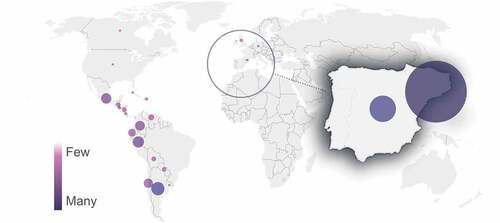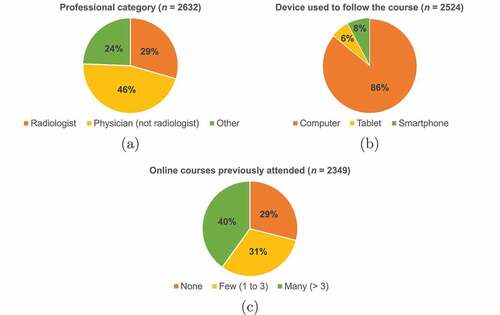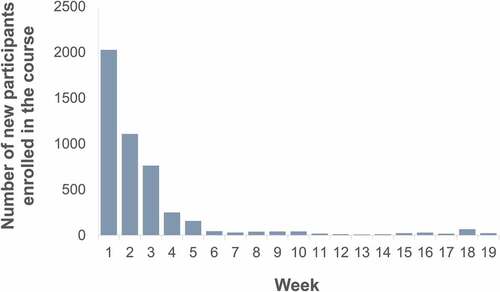Figures & data
Table 1. Topics of the course on chest radiology suggestive of COVID-19.
Figure 2. The (a) first, (b) second and (c) third exercise used to perform the pre- and post-test for the evaluation of the acquired knowledge.

Table 2. Participants’ questionnaire to evaluate the e-learning methodology.
Figure 3. Distribution of participants by country of origin (the area of the bubble is proportional to the number of participants).

Figure 4. Distribution of participants by (a) professional category, (b) device used to follow the course, and (c) number of online courses previously attended. For all charts, represents the number of participants who provided the corresponding information in the course registration form or in the evaluation questionnaire.

Table 3. Number () and percentage (%) of participants within each of the analysed categories (only those who provided the information are considered).
Table 4. Comparison of independently evaluated pre- and post-test exercises.
Table 5. Comparison of pre- and post-test exercises considered as a whole.
Table 6. Scores of the post-test exercises by age.
Table 7. Scores of the post-test exercises by professional category.
Table 8. Scores of the post-test exercises by number of online courses previously attended.
Table 9. Summary of the responses of the e-learning methodology evaluation questionnaire.
Table 10. E-learning methodology evaluation by age.
Table 11. E-learning methodology evaluation by professional category.
Table 12. E-learning methodology evaluation by number of online courses previously attended.

